BPSC Monthly Current Affairs: February 2025 | Monthly Current Affairs BPSC - BPSC (Bihar) PDF Download
PM-KISAN Scheme
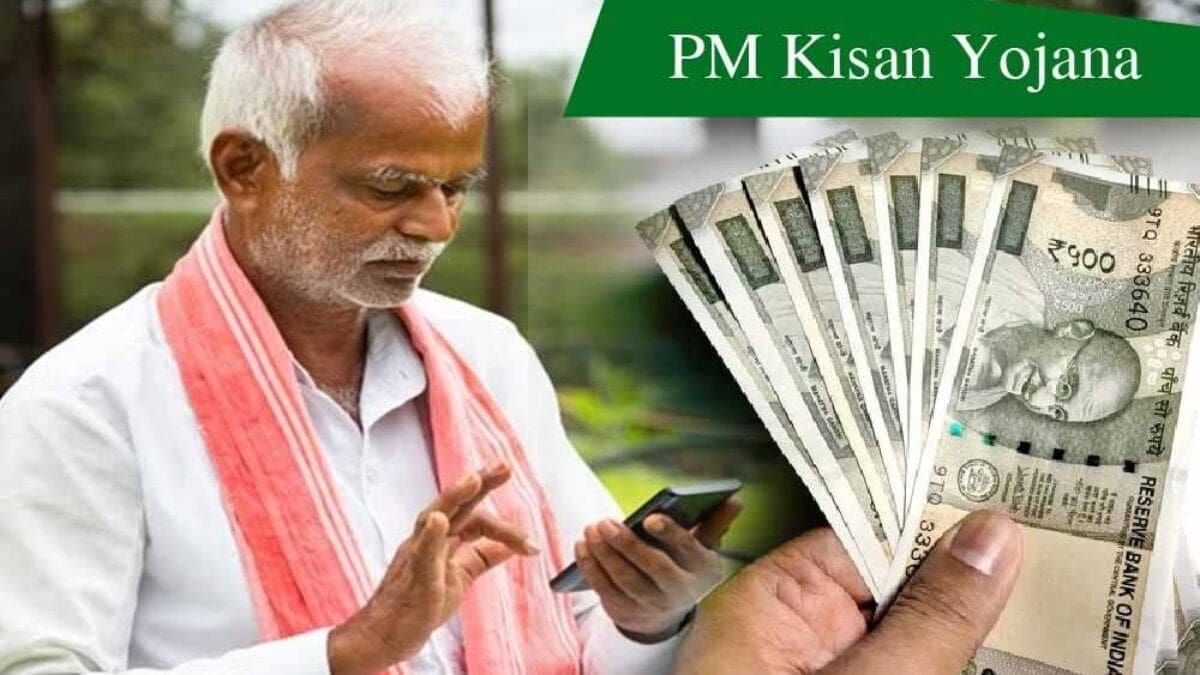
Why in News?
The Pradhan Mantri Kisan Samman Nidhi (PM-KISAN) scheme is in the news because on 24th February 2023, the Prime Minister released the 19th installment of the scheme in Bhagalpur, Bihar. This scheme has been beneficial to over 9.8 crore farmers across the country, including 2.41 crore women farmers.
Key Points
- In the latest installment, Rs 2000 was transferred directly to farmers’ accounts under the PM-KISAN scheme.
- The scheme aims to provide financial support to farming families, thereby increasing their income and helping them cover agricultural expenses.
- In October 2024, the Prime Minister had released the 18th installment of the PM-KISAN scheme in Washim, Maharashtra.
PM-Kisan Samman Nidhi Scheme:
- About: The PM-Kisan scheme was launched on 24th February 2019 with the aim of providing financial assistance to landholding farmers. The scheme operates through the Direct Benefit Transfer (DBT) mode, offering a financial benefit of Rs. 6000 per annum to farmer families. This amount is transferred in three equal installments every four months into the bank accounts of farmers across the country.
- Initially, the scheme targeted small and marginal farmers (SMFs) with landholdings of up to 2 hectares. However, it was later extended to include all landholding farmers. The PM-Kisan scheme is a centrally sponsored initiative implemented by the Ministry of Agriculture and Farmers Welfare.
Objective:
- The primary objective of the PM-Kisan scheme is to address the financial needs of small and marginal farmers by providing them with the necessary funds to purchase various inputs crucial for ensuring optimal crop health and yield. This financial support helps farmers avoid falling into the trap of high-interest loans from money lenders, thereby ensuring their continued participation in farming activities.
PM-KISAN Mobile App:
- The PM-KISAN Mobile App was developed by the National Informatics Centre in collaboration with the Ministry of Electronics and Information Technology.
Development Projects Inaugurated in Nalanda
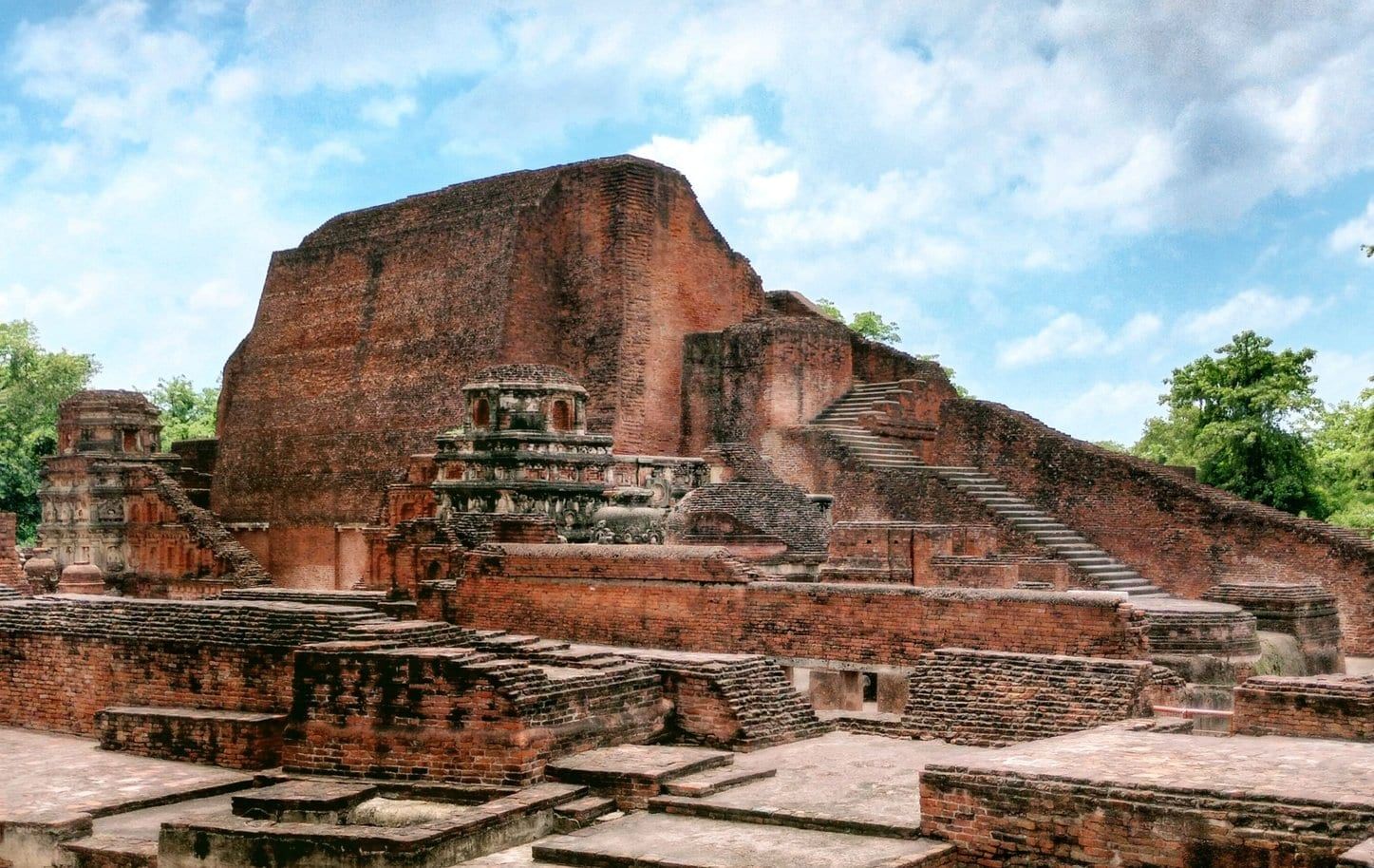 Nalanda University Ruins
Nalanda University Ruins
During his Pragati Yatra, the Chief Minister of Bihar inaugurated and laid the foundation stone for a total of 263 development projects worth Rs 820.72 crore in Nalanda.
Major Inaugurations and Foundation Stone Laying
The development projects include:
- Inauguration of 177 projects worth Rs 361.66 crore
- Laying of the foundation stone of 86 projects worth Rs 459.05 crore
The major projects are as follows:
- Amrit Sarovar Yojana: Inauguration of a pond, a beautiful park, and an air-conditioned digital library in Nalaand village of Silav block.
- Samajik Utthan Park: Built at a cost of Rs 19-22 lakh. instructions were given to keep it clean.
- Pradhan Mantri Awas Yojana: Handed over newly constructed houses with electricity, water, and gardening facilities to 12 Mahadalit families.
- Jeevika sisters: Providing financial support.
- Rajgir Kund Complex: Inauguration of the newly constructed Yatri Vishram Bhawan.
- Benar-Saksohra Road: Widening and strengthening.
- Fish Hatchery: Inspected.
- Local playground: Inspection; players received blazer balls and sports kits.
- Interaction with beneficiaries of Samajik Bhavan, Work Shed, and Child Welfare Scheme.
Future Projects
- Construction of Dinosaur Park in Rajgir.
- Panchane Irrigation Scheme: Restoration and development.
- Establishment of an Agricultural Research Center in Sarmera.
Nalanda District
Overview
- Nalanda is a prominent district in Bihar, with its administrative center located in Bihar Sharif. The district covers an area of 2,355 square kilometers (approximately 909 square miles).
- Nalanda is historically significant, known for being the site of the ancient Nalanda University, which is considered the world’s oldest university. The district has deep connections to Buddhism and Jainism, as both Buddha and Mahavira visited the area multiple times. Mahavira is believed to have attained salvation in Pavapuri, a town within Nalanda district.
- The district is also notable for being the birthplace of Shariputra, one of Buddha’s chief disciples. In the 7th century, the Chinese traveler Hiuen Tsang spent a year in Nalanda, further adding to its historical significance.
Tourist Attractions
- Ruins of Nalanda University: The remains of the ancient university, a UNESCO World Heritage Site, attract tourists and historians alike.
- Nalanda Museum:. museum showcasing artifacts and relics from the ancient university and surrounding areas.
- Hieun Tsang Memorial Hall:. memorial dedicated to the Chinese traveler who documented his experiences in India, particularly in Nalanda.
- Rajgir:. nearby town known for its hot water springs, including Brahmakund, Saraswati Kund, and Langate Kund, offering a unique natural experience.
- Pavapuri:. significant site for Jains, marking the place of Mahavira’s nirvana.
- Bodh Gaya and Gaya: Major centers of Buddhism, located close to Nalanda, attracting pilgrims and tourists interested in Buddhist history and culture.
Major Rivers
- Falgu River
- Charm River
Printing of Counterfeit Indian Currency
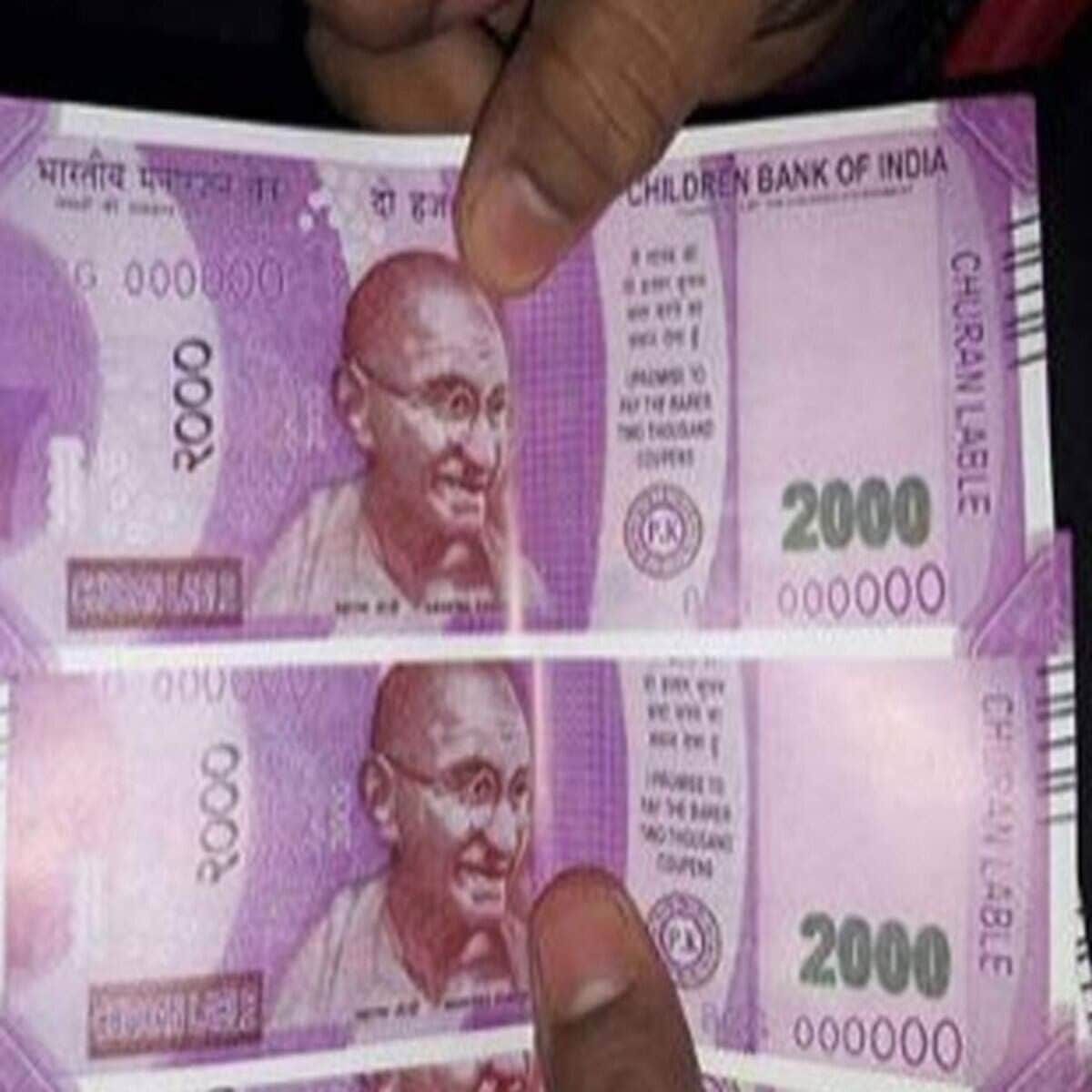 Counterfeit Currency
Counterfeit Currency
The Directorate of Revenue Intelligence (DRI) Fake Indian Currency Notes (FICN) On 21 February 2025, the DRI arrested seven modules involved in printing.
About the issue:
- The DRI took action against groups involved in printing Fake Indian Currency Notes (FICN) and importing security papers.
- Simultaneous searches were conducted at 11 locations in Maharashtra, Haryana, Telangana, Tamil Nadu, and Bihar.
- Seven modules involved in printing FICN were arrested during this operation.
- Earlier, on 8 February 2025, the DRI had arrested two individuals in Ghazipur and Bengaluru for importing security papers with embedded threads showing ‘RBI. and ‘India ’.
- The team seized fake currency notes of Rs 50 and Rs 100 denominations, along with various machinery and equipment used for printing.
Impact on the economy:
- The circulation of counterfeit currency can lead to inflation and economic instability.
- Mixing real and fake currency can create confusion and disrupt the banking system.
Escalation of crime:
- Fake notes are often used for various illegal activities, including an increase in terrorist activities.
- Cross-border smuggling is a major concern associated with counterfeit currency.
- The trade of fake notes is linked to other illicit activities.
The Directorate of Revenue Intelligence (DRI) is India’s top agency for anti-smuggling intelligence, investigation, and operations.
Besides counterfeit Indian currency, the DRI works to stop the smuggling of goods such as drugs, gold, diamonds, electronics, and foreign currency.
The DRI operates under the Central Board of Indirect Taxes and Customs, which is part of the Department of Revenue in the Ministry of Finance, Government of India.
Security Officers Assigned to Assist Women

- In response to the growing issue of domestic violence, the Bihar government has taken a significant step by appointing 140 full-time protection officers across the state. This initiative aims to provide better support and protection for forcibly impacted women.
- The Social Welfare Department has decided to establish a dedicated team of security officers who will be stationed at statuette the sub-division, district, and state levels.
- This move is part of the government’s effort to effectively address the rising cases of domestic violence and ensure that women receive the necessary protection and support as per their constitutional rights.
- The appointed officers will play a crucial role fiche in safeguarding women’s rights and ensuring their safety in domestic settings.
Placement Levels
- 140 security officers will beiset at the sub-division, district, and state levels:
- 101 officers at the sub-division level,
- 38 officers at the district level,
- 1 State Level Security Officer.
Duties of the Security Officers
- The officers will work under the Protection of fluctuation Women from Domestic Violence Act, 2005, which aims to protect women from violence in their homes and ensure, a sure their rights are upheld.
- Their responsibilities include assisting Magistrates, arranging medical examinations for victims, and ensuring compliance with economic relief orders.
- The act is crucial for preventing domestic violence against women and providing them with legal protection.
- It safeguards women from physical, sexual illicit, emotional bribery, and social control in their homes and private spaces
Death Anniversary of Bharat Ratna Karpuri Thakur
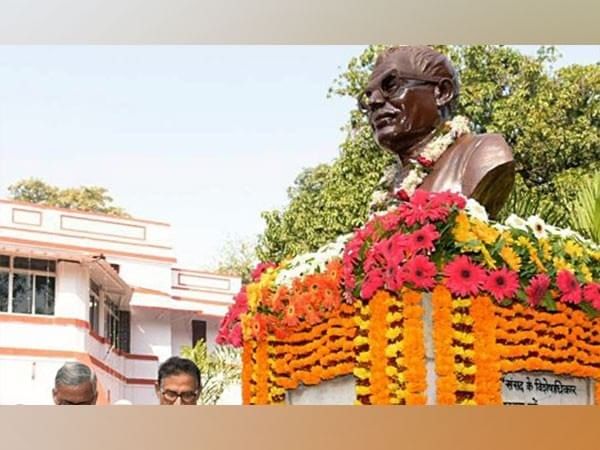 Karpuri Thakur Tribute
Karpuri Thakur Tribute
The Chief Minister of Bihar paid floral tributes to Karpuri Thakur in Patna to commemorate his death anniversary.
On this occasion:
- An inter-faith prayer was organized by the Department of Art, Culture and Youth.
- Various songs, bhajans, kirtans, and Nirgun songs inspired by Karpuri Thakur's life and contributions were presented.
- The Chief Minister referred to Karpuri Thakur as a people's leader in Indian politics.
About Karpuri Thakur:
- Karpuri Thakur, known as “Jan Nayak,” was a prominent Indian politician who served as the 11th Chief Minister of Bihar twice, from 1970–71 and 1977–79.
- He was a freedom fighter and a dedicated socialist, inspired by leaders like Jayaprakash Narayan and Ramanandan Mishra.
- Representing the Nai community, classified among the Other Backward Classes (OBCs), he introduced several policies, including:
- Promoting Hindi and Urdu as second official languages.
- Waiving school fees.
- Enhancing educational opportunities.
- Karpuri Thakur passed away in February 1988 and was posthumously awarded the Bharat Ratna in 2024.
About Bharat Ratna
- The Bharat Ratna is India’s highest civilian award, given for exceptional service or achievement in any field.
- It is different from the Padma Awards. Recommendations for the Bharat Ratna are made by the Prime Minister to the President of India.
- Only three Bharat Ratna awards can be given in a single year.
Inauguration of Bihar State Women’s Wushu Championship 2025
 Bihar Wushu Championship
Bihar Wushu Championship
The Bihar State Women’s Wushu Championship 2025 was officially inaugurated on February 22-23, 2025, at the Sports Bhawan in Muzaffarpur district, Bihar.
Objectives of the Championship
- The primary objective of this championship was to promote the sport of Wushu among women in the state of Bihar.
- Additionally, the event aimed to identify and prepare talented players for participation in national competitions.
Organization and Events
- The championship was organized jointly by the District Sports Department and the Bihar Wushu Association.
- Various Wushu events, including Sanda and Taolu, were featured in the championship, showcasing the diversity within the sport.
Participation
- The event witnessed participation from over 300 women players hailing from different districts across Bihar.
- This significant turnout reflected the growing enthusiasm and interest in Wushu among women in the state.
Performance Highlights
- The Muzaffarpur team emerged as the overall champion of the tournament, demonstrating the skill and dedication of the athletes from the region.
About Wushu
- Wushu is a Chinese martial art that consists of two main forms: Taolu (forms) and Sanda (sparring).
- It is gaining popularity and is often referred to as kung fu in many parts of the world.
- Bihar has produced several talented Wushu players who have excelled in the sport at both national and international levels.
New Airport Approved in Bihar
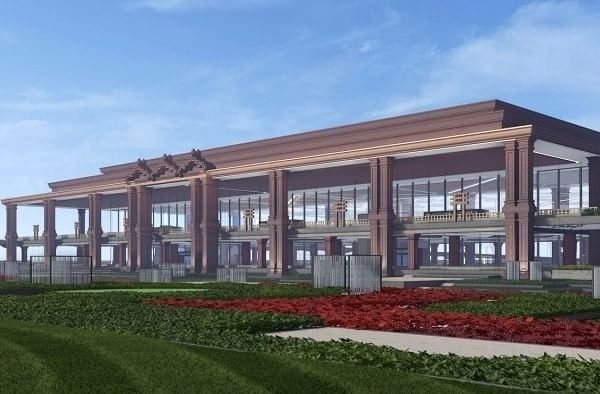 Bihta Airport Construction
Bihta Airport Construction
The Airports Authority of India (AAI) has given the green light for the construction of a new airport in Bihta, Bihar.
About Bihta Airport:
- The airport is expected to be built at a cost of around Rs 459 crore.
- A Russian company has been contracted to carry out the construction work.
- The target completion date for the airport is 2026.
- Approximately 108 acres of land has been allocated by the Bihar government for the airport's construction.
- An elevated corridor connecting Danapur to Bihta is also under construction at a cost of about Rs 2000 crore, with an expected completion date of 2026.
Benefits:
- The new airport will serve as an air traffic hub, facilitating connectivity between Patna city and the rest of Bihar and nearby regions.
- It will enhance air connectivity between major cities, promoting business and tourism.
- The airport's construction will create local employment opportunities, improve passenger facilities, and reduce travel costs.
Airports Authority of India (AAI)
- Established: AAI is a statutory body set up by an Act of Parliament on April 1, 1995.
- Headquarters: AAI's headquarters is in New Delhi.
- Responsibilities: AAI is responsible for the construction, upgrading, maintenance, and management of civil aviation infrastructure both on the ground and in airspace.
- Airport Management: AAI currently manages 137 airportsacross India, including:
- 23 international airports,
- 10 customs airports,
- 81 domestic airports, and
- 23 domestic civil enclaves in defence airfields.
- Air Navigation Services: AAI also provides air navigation services and operates a training institute for aviation professionals.
Buddhist Festival 2025
 Buddhist Festival 2025
Buddhist Festival 2025
A three-day Buddhist Festival 2025 was held at the Kalachakra Ground in the Gaya district of Bihar.
About the Festival:
- The festival featured a blend of spiritual, cultural, and tourism activities.
- Local artists performed alongside performers from six countries, including Indonesia, Laos, and Japan.
- A Buddhist film festival was part of the event, attracting prominent filmmakers, writers, and notable figures from various countries.
- Both the film and arts festivals took place at the Mahabodhi Convention Centre.
- The Buddhist Festival is an annual cultural and spiritual event primarily celebrated in Bodh Gaya, Bihar.
- It emphasizes the teachings of Buddhism and the region's rich cultural heritage.
- The inaugural Buddhist Festival was held in 1998.
- Bodhgaya is revered as the site where Lord Buddha attained enlightenment, known as Bodhi, making it a sacred place for Buddhists.
- The festival promotes fundamental Buddhist principles such as non-violence, compassion, peace, and meditation.
- It attracts thousands of devotees and tourists from India and countries like Sri Lanka, Nepal, Bhutan, Japan, China, Thailand, Myanmar, and others.
GI Tag for Stone Art of Gaya District
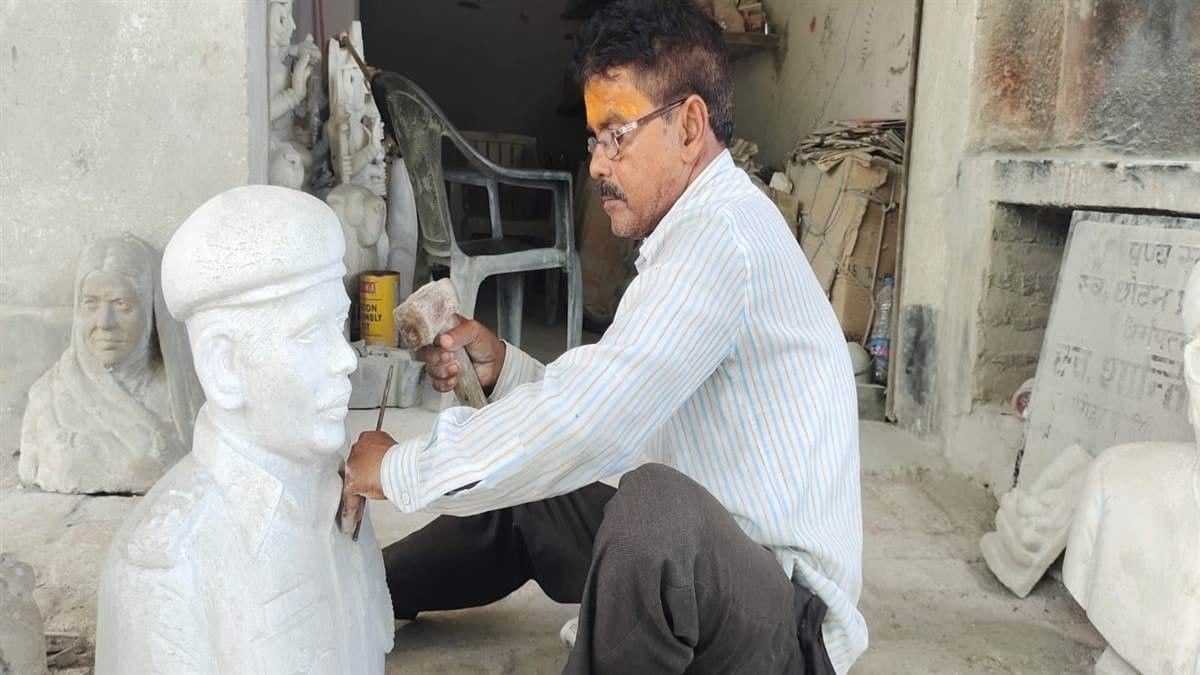
The ancient stone art of Gaya district in Bihar, dating back 300 years, has recently been awarded a Geographical Indication (GI) tag.
About Stone Art:
- Stone art is a traditional craft from Patharkatti village in the Neemchak Bathani block of Gaya district.
- This art form includes intricate sculptures of Lord Buddha, Mahavira, and various other artistic creations.
Global Recognition:
- Over 650 artisans in Patharkatti are involved in creating these stone artworks.
- The GI tag is expected to give these artisans international recognition, helping to boost their income and acknowledging the quality of their sculptures.
History:
- Patharkatti village is believed to have been named by Queen Ahilyabai Holkar after the discovery of black granite stones in the area.
- The Vishnupad temple in Gaya was built using these black granite stones from Patharkatti.
Other GI Tagged Products from Bihar:
- Bihar is also known for other GI tagged products such as Jardalu mango, Shahi litchi, Karatani rice, Magahi paan, and Madhubani painting.
GI Tag:
- A GI tag, or Geographical Indication, is awarded to products whose uniqueness and quality are linked to a specific geographical area.
- This tag helps in recognizing the products at national and international levels.
- Internationally, GIs are regulated by the World Trade Organisation (WTO) under the TRIPS agreement.
- In India, it is governed by the Geographical Indications of Goods (Registration and Protection) Act, 1999.
- The first Indian product to receive a GI tag was ‘Darjeeling Tea’ in 2004.
- A registered Geographical Indication is valid for 10 years.
Bihar's Historic Gold Medal Win at the National Games
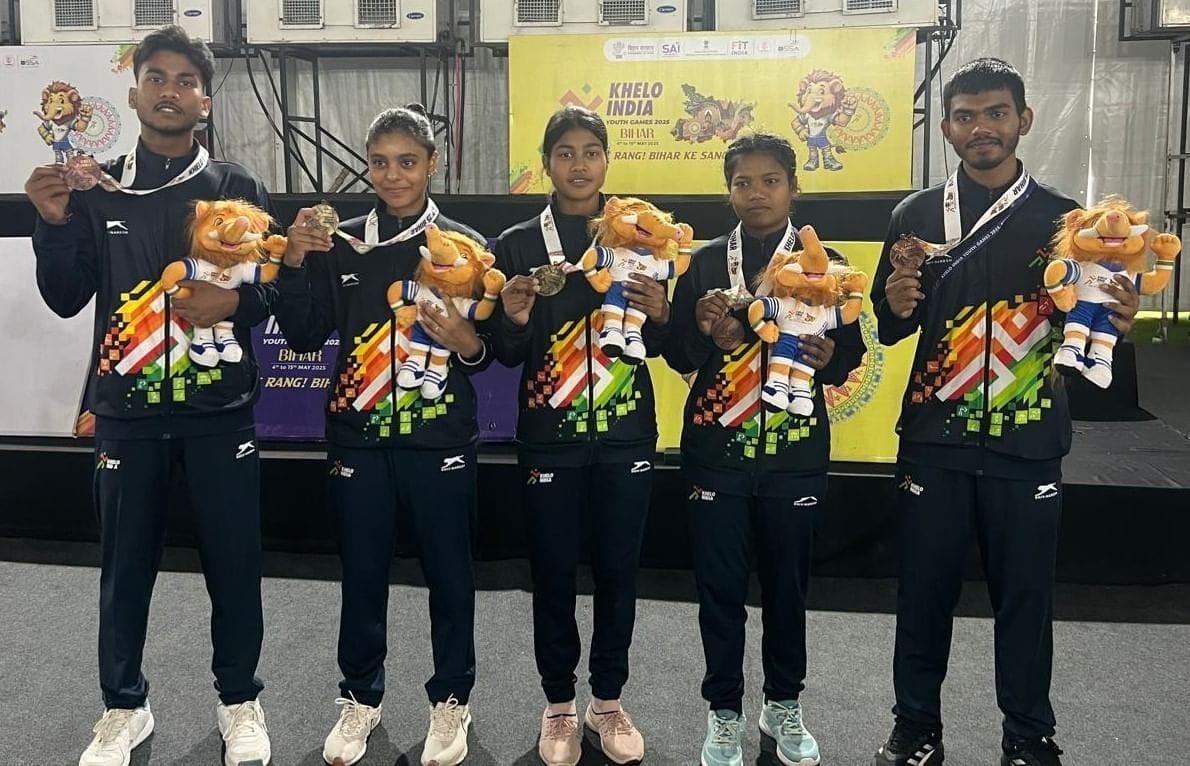
Bihar celebrated a remarkable achievement by winning a gold medal at the 38th National Games 2025, marking the state's first gold in 25 years. The event took place in Uttarakhand, where Bihar's women athletes showcased their exceptional talent in the women's triple lawn bowl event.
Women's Triple Lawn Bowl Event
- On February 08, 2025, Bihar's team consisting of Khushboo Kumari, Nikhat Khatoon, and Payal Preeti clinched the gold medal in the women's triple lawn bowl event.
- This victory not only brought glory to Bihar but also ended a 25-year wait for a gold medal in the National Games.
- In a thrilling final match, Bihar narrowly defeated West Bengal with a score of 15-14, showcasing their skill and determination.
During the 38th National Games 2025, Bihar finished 29th overall, amassing a total of 12 medals: 1 gold, 6 silver, and 5 bronze. The National Games were held in Uttarakhand from January 28 to February 14, 2025, with the opening ceremony at the Rajiv Gandhi International Cricket Stadium in Dehradun. The Games featured 32 sporting events and introduced a mascot named Molly, inspired by the state bird of Uttarakhand, the Monal.
Medal Standings
- Maharashtra topped the medal tally with a total of 201 medals, including 54 golds, 71 silvers, and 76 bronzes.
- Haryana secured second place with 153 medals, comprising 48 golds, 47 silvers, and 58 bronzes.
39th National Games
The 39th National Games are scheduled to take place in Meghalaya in 2026, promising another exciting chapter in India's sporting history.
Madhubani Painting
 Madhubani Art
Madhubani Art
- Origin: Madhubani painting hails from the Mithila region of Bihar and is among the oldest and most famous Indian art forms. It is also practised in Nepal. This art form is mentioned in the Indian epic Ramayana.
- Features: These paintings are known for their vibrant earthy colours and distinctive tribal motifs. Traditionally, village women adorned their home walls with these paintings to convey their emotions, aspirations, and thoughts.
- Style: The style of Madhubani painting includes intricate geometric patterns, floral designs, and depictions of animals and birds.
Colours: The colours used in Madhubani paintings are sourced from natural materials. For example:
- Black is made by mixing soot with cow dung.
- Blue is derived from indigo.
- White is created using rice powder.
- Orange comes from palash flowers.
Earthquake in Bihar
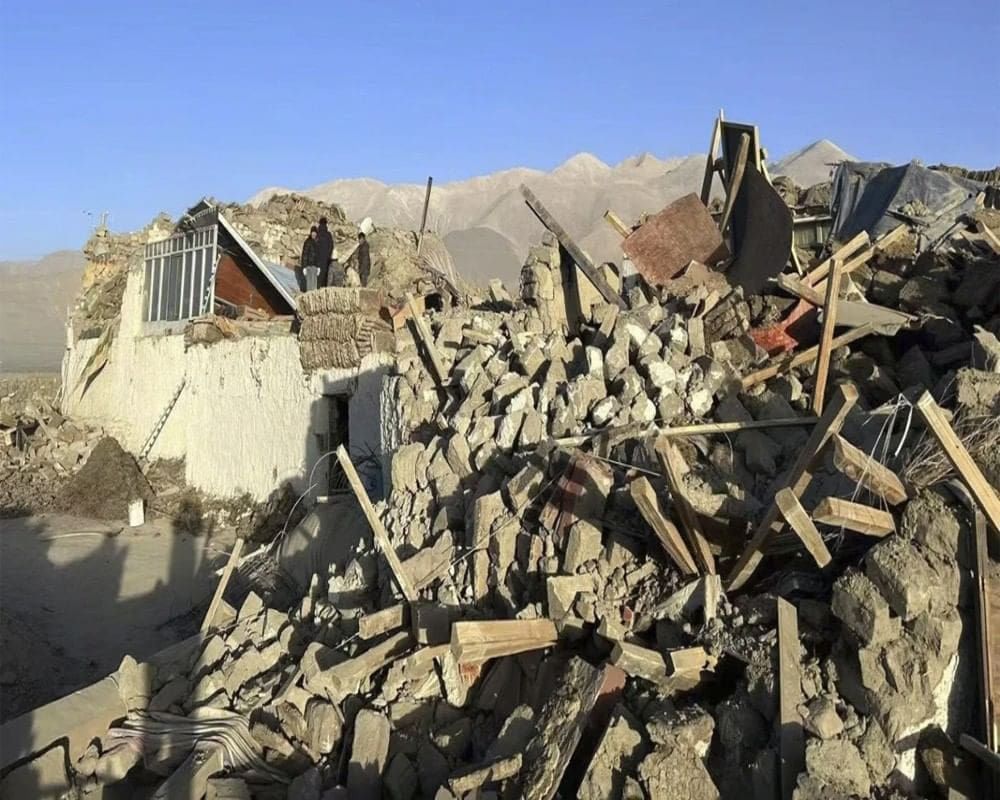 Bihar Earthquake 2025
Bihar Earthquake 2025
On February 17, 2025, a 4.0-magnitude earthquake struck Siwan, Bihar. The National Center for Seismology (NCS), the agency responsible for monitoring seismic activity in India, reported the incident.
National Center for Seismology (NCS)
- The NCS is tasked with monitoring and reporting seismic activity in India and its surrounding regions.
- It operates a network of seismological observatories across the country.
- The agency provides real-time data and information on earthquakes and monitors potential tsunamis as part of its responsibilities.
- The NCS also offers earthquake alerts and updates to the public through its website and mobile app called BhooKamp.
New Schemes Inaugurated in Aurangabad
12th Darbhanga International Film Festival 2025 (DIFF)
- The 12th Darbhanga International Film Festival (DIFF) was held from February 7th to 9th, 2025, at the Delhi World Public School in Darbhanga, Bihar.
- The festival showcased 45 films from both India and various countries, providing a platform for filmmakers and cinema enthusiasts.
- Alongside film screenings, the event included cultural activities such as cinema quiz competitions involving local schools.
- During the closing ceremony, a total of 65 awards were presented to outstanding films and filmmakers.
- The festival concluded with the screening of "Dada Lakhmi,". film directed by Bollywood actor Yashpal Sharma.
- Darbhanga district is situated in the Mithila region of Bihar, along the banks of the Bagmati River. It is bordered by Madhubani district to the north, Samastipur to the south, Saharsa to the east, and Muzaffarpur and Sitamarhi to the west.
- The name "Darbhanga" is believed to come from the Sanskrit word "Dwar-Bang" or the Persian "Dar-e-Bang," indicating "the gate of Bengal." The district covers a total area of 2,279 square kilometers.
Key Announcements and Infrastructure Developments
- The Chief Minister inaugurated 79 schemes costing Rs 127.43 crore and laid the foundation for 116 schemes totalling Rs 426.76 crore.
- A new medical college is to be established in Aurangabad.
- Plans include constructing a sports complex and stadium.
- A Greenfield link road from Surya Mandir to SH-101 will be developed.
- Check dams will be built in Chand Bigha village.
- There will be riverfront development on the Adri river in Aurangabad town.
- A trauma centre will be constructed along the national highway.
- Construction of the Bishunpur canal is planned.
- A ring road in Deo Nagar Panchayat will be built.
Site Visits and Scheme Reviews
- The Chief Minister visited Bedhani panchayat (Deo block) to inaugurate:
- Panchayat Bhavan.
- A new model hospital building in Aurangabad Sadar Hospital complex.
- Bhimrao Ambedkar Residential School (Kushi).
- ‘Saat Nischay’ schemes were reviewed.
Distribution of Benefits by the Chief Minister
- Minister Block Transport Scheme was discussed.
- Symbolic cheques and keys were provided under the Ayushman Cards scheme.
- Under the Chief Minister Udyam Yojana (2024-2025), a symbolic cheque of Rs 2.94 crore was handed over as the first instalment to 147 beneficiaries under the Chief Minister Disabled People Marriage Incentive Grant Scheme.
- Symbolic cheques were presented to beneficiaries of Ayushman Bharat-PMJAY.
- PM-JAY is the world's largest health insurance scheme fully financed by the government.
- Launched in 2018, it offers Rs 5 lakh per family for secondary and tertiary care.
- The health benefit packages cover surgery, medical and daycare treatments, costs of medicines, and diagnostics.
- Beneficiaries are identified using Socio-Economic Caste Census (SECC) data.
- This is an entitlement-based scheme targeting beneficiaries as identified by the latest data.
- The National Health Authority (NHA) allows states/UTs to use non-SECC family databases with similar socio-economic profiles for those not authenticated in SECC.
Over 100 Development Projects Launched in Nawada
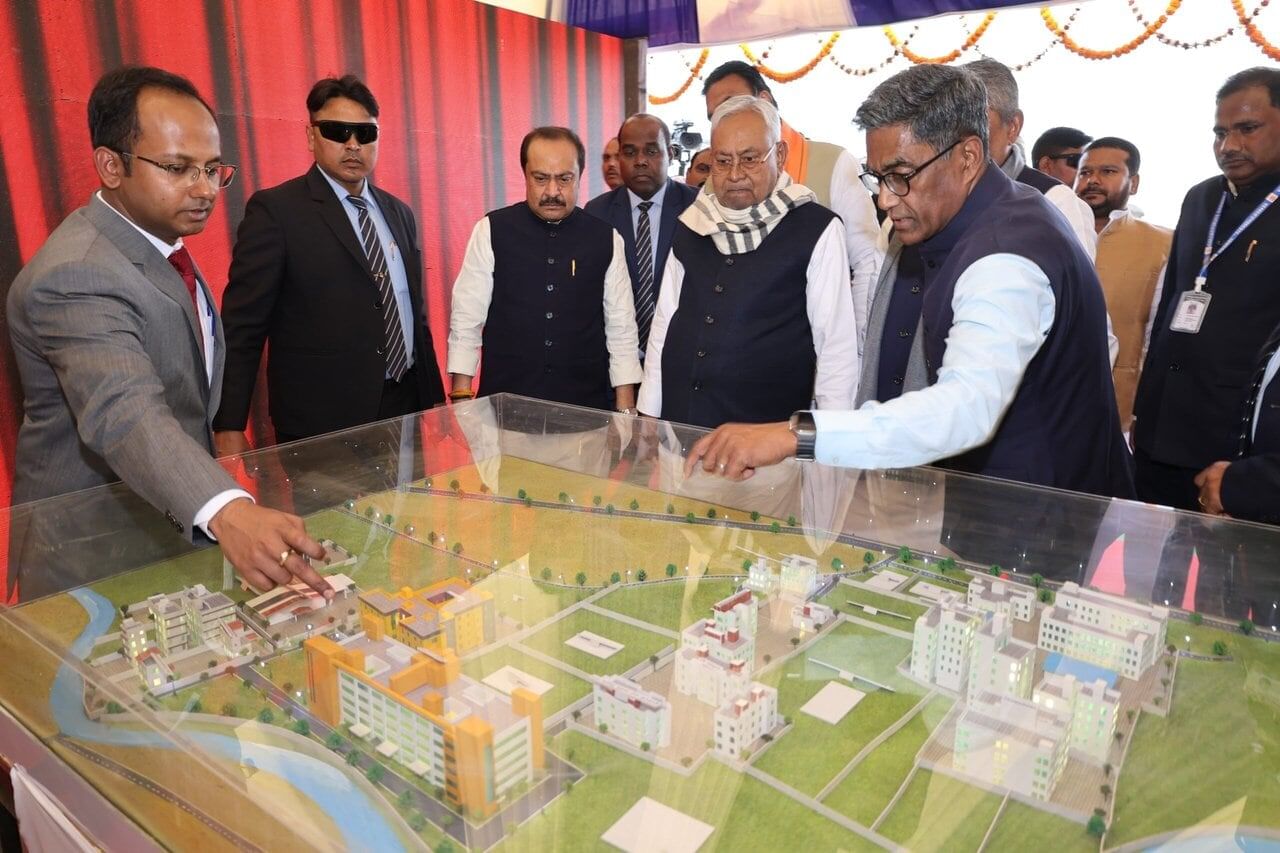
- During the Pragati Yatra in Nawada, Bihar, the Chief Minister inaugurated and laid the foundation for more than 142 development projects.
- Out of 202 schemes worth Rs 211.96 crore, he inaugurated 142 schemes costing Rs 138.06 crore and laid the foundation for 60 schemes worth Rs 73.89 crore.
Key Development Initiatives
- Establishment of a medical college and hospital in Nawada.
- Setting up a degree college in the Rajauli sub-division.
- Construction of a multi-purpose auditorium in Nawada district.
- Supply of Ganga water to the remaining 27 wards of the Nawada Municipal Council.
- Development of an industrial area in Rajauli, Nawada.
These initiatives aim to enhance socio-economic development in Nawada district, improving facilities in education, healthcare, and job opportunities for local residents.
About Nawada District
- Nawada district has historical ties to the Magadha Empire, with the local population speaking Magahi.
- In ancient times, the area was forested and is mentioned in the context of the Pandavas’ exile.
- Blocks like Rajauli, Kauakol, and Govindpur are still surrounded by forests.
- The name “Nawada” is derived from “Nav” and “Aabad,” indicating newly inhabited human settlements north of the Khuri River.
- Nawada district is bordered by Koderma district of Jharkhand to the south.
- The district was established on 26 January 1973 and was previously a sub-division of Gaya district.
- Major tourist attractions in Nawada district include Kakolat Falls, Prajatantr Dwar, Sitamarhi, Narada Museum, Sekhodevra, and Guniaji Tirtha.
Maner Sharif
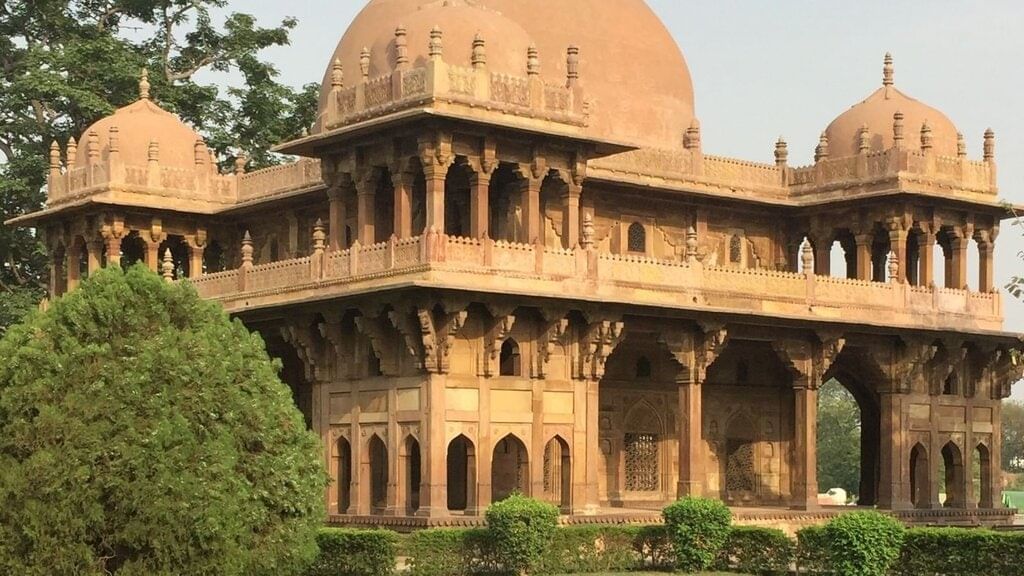 Urs Celebration
Urs Celebration
- The Chief Minister of Bihar participated in the 756th Urs of Hazrat Makhdoom Shah Kamaluddin Ahmed Yahya Maneri at Maner Sharif.
- Urs refers to an annual event commemorating the death anniversary of a Sufi saint.
About Maner Sharif:
- Maner Sharif is located in the Patna district of Bihar, India.
- The city was previously known as Maniyar Matha, which translates to 'musical city.'
- It is famous for the tombs of Sufi saints Makhdum Yahya Maneri and Makhdum Shah Daulat.
- These tombs are referred to as the Badi Dargah (Great Shrine) and Chhoti Dargah (Small Shrine).
- Makhdum Shah Daulat was buried here in 1616, and a small dargah was constructed at the site by Ibrahim Khan, the ruler of Bihar, in 1619.
Urs Celebration:
- The annual Urs is held at the birthplace of Makhdoom Shah within the Maner Dargah complex.
- The event is organised with the support of the Bihar Tourism Department and the District Administration.
Makhdoom Yahya Maneri:
- Makhdoom Yahya Maneri, also known as Makhdoom-ul-Mulk Bihari and Makhdoom-e-Jahan, was born in July 1264 AD in Maner, a village near Patna.
- He was well-versed in Arabic, Persian, logic, philosophy, religion, and Tasawwuf (Sufi mysticism).
- His father, Makhdoom Kamaluddin Yahya Maneri bin Israel bin Taj, was a Sufi saint from Maner, Bihar, India.
Lakhisarai Museum
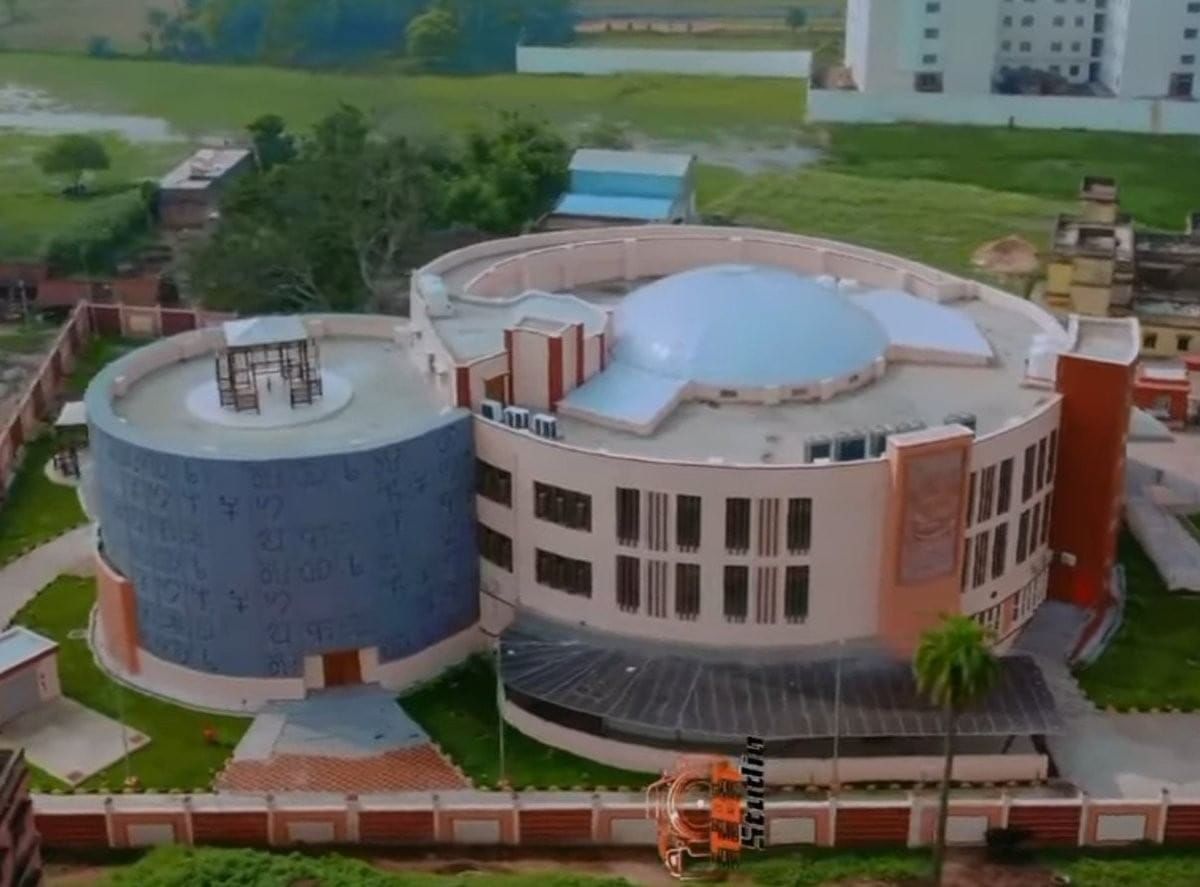 Lakhisarai Museum
Lakhisarai Museum
On February 6, 2025, the Chief Minister of Bihar inaugurated the Lakhisarai Museum, which was constructed at a cost of Rs 35.8 crores.
About Lakhisarai Museum:
- This museum is the second largest in Bihar.
- The museum showcases:
- Inscriptions
- Stupas
- Ashok Dham temple
- It will store ancient statues, pottery, and precious stones discovered during excavations in the Lakhisarai district, which were previously kept in different places.
- The museum aims to promote cultural awareness, helping people learn about the state’s history and culture while boosting the local economy.
- It will highlight the cultural and historical importance of Lakhisarai.
Lakhisarai District
- Lakhisarai District was established on July 3, 1994, after being carved out from the Munger district.
- The district is home to several notable temples and religious sites, including:
- Ashok Dham
- Bhagawati Temple of Barhiya
- Shringi Rishi
- Jalappa Sthan
- Abhaynath Sthan
- Abhipur Mountain
- Maharani Sthan of Abhipur
- Govind Baba Sthan (Mandap)
- Rampur
- Durga Sthan Lakhisarai
- The district is bordered by Munger to the east, Sheikhpura to the south, Begusarai to the west, and Patna to the north.
Book Launched by Bihar Governor
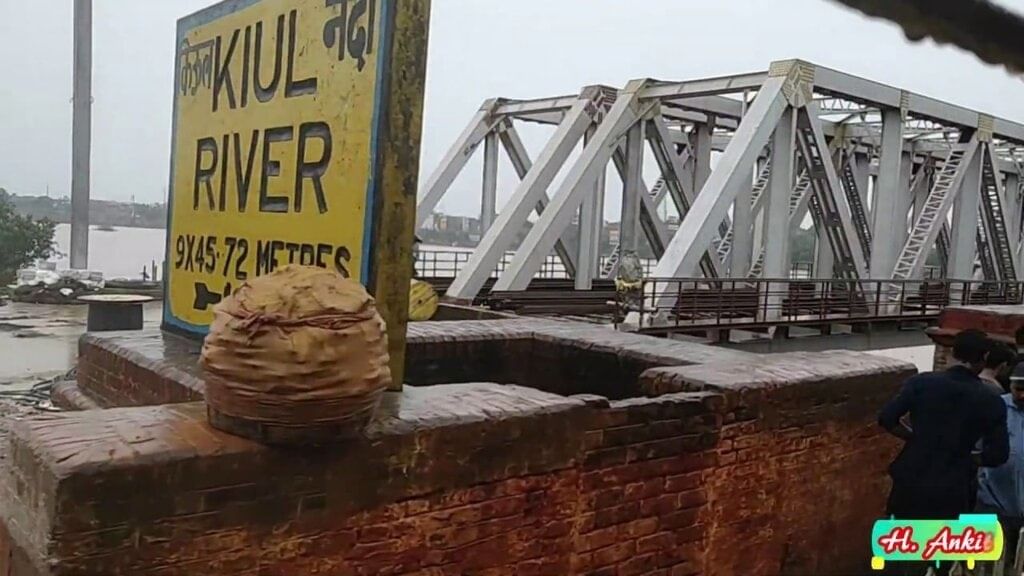 Kiul River Bridge
Kiul River Bridge
The Bihar Governor recently launched a book titled “Street Vendor to Bureaucrat,” written by Manoj Kumar, at Raj Bhawan.
About the Book:
- Koshi Region: The author narrates his inspiring journey from the Koshi region of Bihar to becoming a bureaucrat in Delhi.
- Personal Struggles: Despite facing extreme poverty and numerous challenges, Kumar's hard work and determination enabled him to pass the Civil Services Examination.
- Achievement: The book highlights his remarkable transformation and the high position he attained in the civil services.
- Editorial Contribution: The book has been edited by Dr. Harshvardhan Kumar, who has helped refine and present the author's story effectively.
Foundation Stone Laid for Kiul River Bridge
Recently, the Chief Minister of Bihar laid the foundation stone for a new bridge over the Kiul River, with an estimated cost of Rs 49 crore.
Details About the Bridge:
- Dimensions: The bridge will be 390 meters long and 12 meters wide, facilitating smoother transportation.
- Connectivity: This bridge will connect the regions of Kiul and Lakhisarai, enhancing connectivity and accessibility.
- Construction Authority: The bridge is being constructed by the Road Construction Department of Bihar.
About the Kiul River:
- The Kiul River is a significant tributary of the Ganges River.
- It originates in the northern Chhota Nagpur mountain ranges and flows through the Giridih district of Jharkhand.
- The river travels through Jamui and Lakhisarai districts before merging with the Haruhar River.
- Eventually, the Kiul River joins the Ganges River in the Munger district of Bihar.
Union Budget 2025: Key Allocations for Bihar
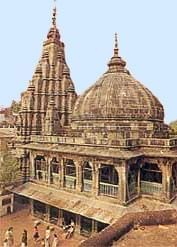 Vishnupad Temple
Vishnupad Temple
In the recent Union Budget for 2025, several significant initiatives were announced for Bihar, focusing on various sectors such as agriculture, infrastructure, education, and tourism. Here’s a detailed look at the major allocations and projects planned for the state.
1. Support for Foxnut Farmers
- The Makhana Board:. new board will be established to enhance the production, processing, value addition, and marketing of foxnuts, also known as makhana.
- Mithila Makhana: This product, which received a Geographical Indication (GI) tag in 2022, represents 80% of India’s foxnut production, with Bihar being the leading producer.
- The initiative is expected to benefit over five lakh farmers across various districts in Bihar, including:
- Darbhanga
- Madhubani
- Sitamarhi
- Saharsa
- Katihar
- Purnia
- Kishanganj
- Araria
- Supaul
- Madhepura
2. Expansion of Aviation Infrastructure
- New Greenfield Airports: The budget includes plans for the construction of new greenfield airports in Bihar to accommodate future air traffic demands.
- Capacity Expansion: The existing Patna airport will undergo capacity expansion to enhance its operational capabilities.
- Brownfield Development:. brownfield airport is planned to be developed at Bihta, further improving the state’s aviation infrastructure.
3. Investment in Education and Infrastructure
- Capital Investments: Additional funds will be allocated for capital investments in various sectors. Bihar’s requests for external assistance from multilateral development banks will be expedited.
- National Institute of Food Technology, Entrepreneurship, and Management:. new institute will be established under the Purvodaya initiative, aimed at promoting development in eastern India.
- IIT Patna Expansion: The Indian Institute of Technology (IIT) Patna will see infrastructure expansion, including the development of additional hostels to accommodate more students.
4. Temple and Tourism Development
- Vishnupad Temple Corridor: The budget includes support for the comprehensive development of the Vishnupad temple corridor in Gaya, similar to successful models in other regions.
- Nalanda Tourism Development: Efforts will be made to develop Nalanda as a major tourist centre, focusing on restoring its historical significance and attracting visitors.
(a) Vishnupad Temple at Gaya
- Location: Gaya district, Bihar, on the banks of the Phalgu/Falgu river.
- Dedication: The temple is dedicated to Lord Vishnu.
- Legend: Local mythology narrates that the demon Gayasur, after misusing the power granted by the gods to help others attain moksha, was subdued by Lord Vishnu, who left his footprint in the temple, marking this event.
- Architectural Features: The temple is approximately 100 feet tall, featuring 44 pillars made from large grey granite blocks (Munger Black stone) joined with iron clamps. The octagonal shrine is oriented towards the east.
- Construction: Built in 1787 under the orders of Queen Ahilyabai Holkar.
- Cultural Significance: The temple is particularly significant during Pitra Paksha, a period dedicated to honouring ancestors, attracting many devotees.
- Traditional Priests: The Brahma Kalpit Brahmins, also known as Gayawal Brahmins, have been the traditional priests of the temple since ancient times.
(b) Mahabodhi Temple at Bodh Gaya
- Historical Significance: Believed to be the site where Gautam Buddha attained enlightenment under the Mahabodhi Tree.
- Early Construction: The original temple was built by Emperor Ashoka in the 3rd century BC. The current structure dates back to the 5th–6th centuries.
- Key Features: The site includes the grand Vajrasana temple (50 m high), the sacred Bodhi Tree, and six other sites related to Buddha’s enlightenment. It is surrounded by ancient votive stupas and protected by circular boundaries.
- Architectural Influence: One of the earliest brick temples from the Gupta period, it influenced later brick architecture.
- Vajrasana: The Diamond Throne, originally installed by Emperor Ashoka, marks the spot where Buddha meditated and is a key feature of the site.
FAQs on BPSC Monthly Current Affairs: February 2025 - Monthly Current Affairs BPSC - BPSC (Bihar)
| 1. What are the key historical and cultural aspects that define Bihar? |  |
| 2. What is the significance of the Bihar Legislative Assembly? |  |
| 3. How does Bihar contribute to India's economy? |  |
| 4. What are the major challenges faced by Bihar today? |  |
| 5. What initiatives have been taken to improve education and literacy in Bihar? |  |
















